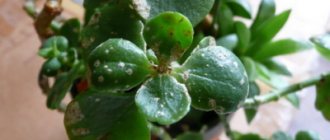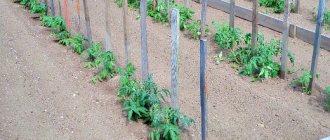Streptocarpus. Home care: propagation, fertilization, watering, soil.
Most species are lithophytes in nature (in rare cases epiphytes). They are conventionally divided into two groups:
Streptocarpus produces rather dense peduncles with 2-3 flowers. On an adult plant you can see up to 100 flowers at the same time.
Streptocarpus. Care.
If you successfully grow violets, then you will definitely make friends with Streptocarpus. But even though they belong to the Gesneriaceae family, caring for Streptocarpus has its own characteristics.
Lighting. Temperature. Streptocarpus grows well in both natural and artificial light. You can place plants on any window. They love fresh air, slightly increased humidity, but cannot tolerate direct sunlight.
If you want to enjoy flowering all year round, use fluorescent lamps. Daylight hours should be 12 hours or more. But even if there is no opportunity or desire to install lamps, Streptocarpus will retire for a couple of months, and with the arrival of the spring sun they will again delight with flowering.
Rooting cuttings and young plants are kept at 22-25°C. But they tolerate even significant short-term increases in air temperature without problems.
The soil. Airtight soil combined with abundant watering is detrimental to plants. Streptocarpus, like other representatives of the Gesneriaceae, breathe through roots, so not only drainage is required, but also a light, breathable soil mixture with an acidity pH of 6.5-6.9. Primer for violets with the addition of perlite up to 40% of the total volume is perfect. If you prepare the soil yourself, then take the following components in equal parts: high-moor peat, black soil, vermiculite, pine humus, perlite plus crushed charcoal (1 cup). Chernozem is not added to children and young plants.
Watering after drought helps to quickly restore leaf turgor. Therefore, it is better to dry it than to over-moisten it. Periodic short-term drying of the earthen clod helps prevent the development of late blight and other fungi that cannot fully exist without moisture.
Fertilizer. Caring for Streptocarpus necessarily includes feeding. A fertilizer with nitrogen, phosphorus and potassium in equal parts is ideal if we are talking about young samples. A solution with a predominance of phosphorus and potassium is needed by adult plants before flowering begins. During the dormant period, Streptocarpus does not need feeding.
How to grow it correctly?
Streptocarpus is a fragile plant, it is very easy to care for, the main thing is to follow all care recommendations.
Lighting
Streptocarpus is a light-loving plant that requires full daylight. It must be provided with 14 hours of daylight. The plant feels great on windowsills. But in winter, artificial supplementary lighting must be organized. Experienced gardeners recommend alternating a fluorescent lamp and a phytolamp.
Soil and fertilizers
Light and loose soil is preferable for the plant. It is advisable to add peat, perlite, vermiculite and sphagnum moss to the soil. Streptocarpus boasts very active development of the root system. Many gardeners use a mixture of peat and vermiculite in equal proportions. You can even plant the plant in peat. The only thing you need to take into account is that watering in this case needs to be done much more often, otherwise the peat will very quickly turn into a loose piece that does not absorb moisture well.
The flower takes fertilizers quite well, but what should you feed it with?
Attention! It is better to use nitrogen-phosphorus fertilizers with a predominant nitrogen content. Such fertilizers should be diluted with water by half. You need to feed once every seven days, each time reducing the dose of fertilizer.
Properly fed flowers quickly grow green mass and then bloom profusely.
Watering
Streptocarpus requires moderate watering. It is better to overdry than to overwater, because the plant tolerates drought normally. You need to water regularly and often, but so that the top layer of soil has time to dry out. It may happen that streptocarpus becomes sluggish as a result of lack of moisture. Then it is necessary to organize watering 2-3 times every two hours.
When there is too much moisture for a plant, the root system can rot. In this case, the flooded streptocarpus begins to fade, and the leaves become covered with brown spots. The only thing that can save it is to transplant it into a new pot with fresh soil.
Humidity
The plant responds well to frequent spraying. You can place a saucer of water next to the flower, thus ensuring the high humidity it needs.
Temperature
Streptocarpus is a heat-loving flower. The optimal growing temperature in summer is 23–25 degrees. If the temperature is higher, the plant will wither. Therefore, at midday it is better to shade the flower from direct sunlight. Winter is considered a dormant period for streptocarpus, so it should be moved to a cooler place with a temperature of 14–15 degrees. The recommended daylight hours are 7–8 hours.
Propagation by seeds
Streptocarpus reacts rather poorly to sudden changes in temperature, so you need to create a constant temperature regime within 22–25 degrees.
When watering, you should not allow water to get on the leaves or root collar of the plant, so the ideal method of watering would be to immerse the pot in water for a few minutes.
To successfully grow streptocarpus from seeds, it is necessary to create high air humidity in the room.
During the heating season, indoor humidity drops sharply, making it difficult to create the necessary conditions. Therefore, flower growers resort to a little trick. They place dishes with water on the heating devices. And some even organize glass shelving. All this helps create the required microclimate for flowers.
Reference! Protection from direct sunlight should be provided. The optimal condition would be to use artificial lighting. You can build mini greenhouses with built-in lighting.
Video on the topic of propagation of streptocarpus by seeds:
Reproduction by leaf fragment
The soil should be chosen to be light, breathable, not too nutritious and retain moisture well. Drainage in growing streptocarpus is also very important.
When growing streptocarpus from leaves, it is very important to provide the leaves with sufficient moisture. The container should be placed in a bright place. It is necessary to organize a greenhouse, or cover the pot with a plastic bag.
The soil must not be over-moistened, otherwise the leaf fragment will rot. Insufficient lighting or too bright light can cause the fragment to wither and poor growth of the “babies”. If ideal conditions are created, a baby will emerge from each side vein in 4–6 weeks.
After the leaves become more than 3 cm, you can begin to plant them in separate small containers. It is important to maintain greenhouse conditions for the leaves at first. Within a month, the children should take root well and begin to actively grow; they can be gradually weaned off the greenhouse.
Read more about the features of streptocarpus propagation by seeds and leaf fragments here.
Video on the topic, propagation of streptocarpus with a fragment of a leaf:
Reproduction of Streptocarpus.
Streptocarpus reproduces in three ways:
During the process of growth and development, Streptocarpus produces lateral stepsons, which grow and also bloom. But for more abundant flowering, they are planted in a separate container. To do this, remove the old flower stalks, then pull the plant out of the pot, carefully remove the substrate, cut it into pieces with a clean knife or blade so that each of them has its own roots, treat the cut areas with activated carbon and plant them in containers.
It takes about four weeks for roots to appear. The same amount will be needed for the first baby leaves to appear. Young children are planted when the second leaf appears.
Streptocarpus is also propagated by seeds. To get them, pollen from one variety is pollinated by another flower.
Plants are prone to self-pollination, which is why many of them have a spiral-shaped seed box, which after 1.5-2 months. from the moment it appears it turns brown. When ripe, the box bursts and the seeds scatter to the sides. To collect seeds, the capsule is removed from the peduncle when it begins to dry out. Then they are wrapped in a napkin or paper and sent for ripening.
Sowing seeds is possible regardless of the time of year. To produce offspring, daylight hours must be at least 12 hours. For sowing, use a small flat container with a moistened earthen substrate. The seeds are not sprinkled on top. After sowing, the container is covered with glass. Ventilation is carried out every day (15-20 minutes is enough). Condensate is removed in a timely manner. Germination temperature 22-25°C.
The first shoots are expected in 12-20 days. As a rule, after another month the seedlings sprout. After the second pick, each plant gets its own place, for example, a 100-gram glass. The pots should be increased gradually. Each next one is a couple of centimeters larger than the previous one. First, drainage is placed in each container, then a light soil mixture, then a young plant is planted.
When Streptocarpus is grown by seeds, hybrids are obtained that do not repeat the color and shape of the mother plant.
Source
Soil for streptocarpus
In order to choose the right soil for a plant, you should always first ask where and how it grows in natural conditions.
Many descriptions of plants begin with an indication of its “homeland”. This information should not be neglected, but should be taken into account. Another variety is xerophytes that can tolerate prolonged drought. Xerophytic species of streptocarpus can be distinguished by their wide, fleshy leaves, in which they accumulate moisture for future use. Some types of streps have the ability to restore leaf turgor after watering.
There are species (with long and thin leaves) that do not tolerate dry periods well. They originate in humid forests with more nutritious soil.
As you can see, streptocarpus can be very different. And although hybrid streptocarpus grow on our windowsills, they have a lot in common with their ancestors. Despite this, we plant all our pets in the same soil and often do not understand why some of them grow poorly, because the care for all is the same. And the reason is that their genes “mix a lot of different blood” and the microclimate in our houses and apartments is different. Therefore, it is not surprising that for one collector streptocarpus grow well and bloom when planted in moist forest moss, while for others they develop in high-moor peat, a substrate for orchids, or are kept on wick watering.
My streptocarpus collection is now in its fifth year. During this time, many different varieties of these plants passed through my hands. We tried many different growing soils. But, nevertheless, I settled on high-moor peat as a base; the ingredients and leavening agents may change. And first of all, it depends on the time of year.
The soil for growing streptocarpus must have good air permeability to access the root system. Be moisture-absorbing, but not conducive to water stagnation. Under no circumstances should the substrate be nutritious. The root system of streptocarpus is superficial, consisting of thin hairs that are able to absorb from moisture all the substances necessary for the plant. In humus-rich soil, the root system suffocates and rots. As a result, the plant dies. I buy neutralized (deoxidized) high-moor peat in gardening stores, in large professional packages. It is red in color, pH 5.5-6.2.
You cannot buy soil in supermarkets; the bag may contain waste soil from greenhouses. Even if you buy a small package of peat, don’t be too lazy to do it in a specialized store. Although I can’t vouch for anyone.
I prefer medium fraction peat.
Soil for streptocarpus
Before use, I sift the peat in a basket designed for storing bulbous peat.
A basket with large cells and peat spills out well through its holes. After sifting, I throw away large elements.
Soil for streptocarpus
Soil for streptocarpus
Heavily crushed peat requires more raising agents. Without them, it cakes and compacts very quickly, and does not dry out well after watering. As a result, plants have to be replanted more often. High-moor peat is a poor substrate; a healthy root system grows quickly and well in it. Lowland peat (it is black) is not suitable for growing streptocarpus. When planting in a pot, I add a few granules of Osmokot fertilizer.
I use prepared coconut briquettes and perlite as soil looseners; I have been successfully using foam balls for a long time. You need to understand well why this or that baking powder is added, taking into account your microclimate in the apartment. Coconut substrate moisturizes the substrate well; I add it as a component in the summer. His faction is also different. I prefer coconut of a larger fraction, it does not cake and additionally performs the function of air exchange, the peat does not compact.
Soil for streptocarpus
If you have increased dampness in your apartment, then it is dangerous to use baking powder that retains moisture; you can flood the plant. For this reason, I do not use sphagnum moss as a soil additive. Sphagnum absorbs water very well and then releases it to the plant. Even with extensive experience in growing streptocarpus, it can be difficult to determine the required volume of water when watering. In my growing conditions, sphagnum is not suitable as a leavening agent. For about the same reason I don’t use vermiculite. This is especially dangerous in the off-season, when the radiators do not work and the soil in the pots does not dry out well.
I have successfully used foam balls as a baking powder. Actually, they replaced perlite for me. The balls do not accumulate any harmful substances and do not absorb water; they are larger than perlite and clearly perform their function in this case. This is what a healthy streptocarpus root system looks like in the ground using foam balls.
Soil for streptocarpus
If you have any questions, ask them in the comments. I will be happy to answer them.
Source
Streptocarpus. Content issues
So, AGRICULTURAL ENGINEERING. Streptocarpus are plants from the tropical and subtropical zones of South Africa. From mountainous areas with forests, including on the east coast and about. Madagascar. Hence the soil: little humus, a lot of impurities (some species of streptocarpus, by the way, grow as epiphytes, i.e. orchids known to us). At home, this is light soil, perlite, bark, coconut coir, sphagnum in a pot. All this ensures sufficient air capacity in the soil, which means the growth of good roots and, as a result, the absence of problems for plants. Water mode. If you have a humidifier at home, there will be no problems with these plants. If your place is very dry, streptocarpus can “weigh” the leaves. However, after watering, turgor is easily restored. Therefore, it is believed that streps tolerate underwatering more easily than violets. The golden rule: water only after the clod has dried. However, many collectors successfully grow strapes on wicks. I haven’t tried it myself, but there are such specialists on the forum. Personally, I water in trays.
Soil for growing streptocarpus
Soil for growing streptocarpus
Post by Gaume » April 18, 2013, 5:36 pm
I also plant violets in the same soil. For both plants I add perlite to the soil.
What kind of soil do you plant streptocarpus in?
Re: Soil for growing streptocarpus
Post by Zinaida » Oct 18, 2013, 02:11 pm
Re: Soil for growing streptocarpus
Post by Gaume » Oct 18, 2013 5:37 pm
Re: Soil for growing streptocarpus
Post by Zinaida » Oct 19, 2013, 5:16 pm
Re: Soil for growing streptocarpus
Post by Gaume » 19 Oct 2013, 17:55
Re: Soil for growing streptocarpus
Post by Zlata » 07 Nov 2013, 19:55
Re: Soil for growing streptocarpus
Post by Gaume » 07 Nov 2013, 20:31
Re: Soil for growing streptocarpus
Post by Zlata » 07 Nov 2013, 20:45
Re: Soil for growing streptocarpus
Post by anaconda » 07 Nov 2013, 21:38
Hello! In February I will have a planned transplant of violets and everything growing and blooming. For violets I will prepare the following mixture:
Is this mixture suitable for streps? I also wanted to add charcoal, but couldn’t find it. Maybe I was looking in the wrong place? Nobody knows where I can buy it?
Re: Soil for growing streptocarpus
Post by anaconda » 07 Nov 2013, 21:41
Zinaida wrote: Don’t you use the famous and vaunted Greenwald?
Re: Soil for growing streptocarpus
Post by Gaume » 08 Nov 2013, 07:46
I’ll take a photo of the soil for Biolan violets during the day and show you.
How to use perlite for plants?
In plant growing, perlite is used to loosen and retain moisture in the soil. You can root individual parts of the plant in perlite. This includes rooting leaf cuttings, which grow a good root system in perlite. This is one of the so-called “root in landless mixture” methods. Perlite has a sterile environment in which mold and pathogenic fungi do not form. Perlite is also used as drainage.
Perlite is sold in Riga in the Price Clubs store. But the price there is a little high. It is better to look for perlite in small shops. They sell already packaged perlite (per liter). At one time, the Depot store sold broken glass under the name “perlite” (in white buckets). It has nothing in common with perlite. I buy packaged perlite (2 liters, I think) for about 0.45 cents.
Re: Soil for growing streptocarpus
Post by Gaume » 08 Nov 2013, 08:12
anaconda wrote: Hello! In February I will have a planned transplant of violets and everything growing and blooming. For violets I will prepare the following mixture:
Is this mixture suitable for streps? I also wanted to add charcoal, but couldn’t find it. Maybe I was looking in the wrong place? Nobody knows where I can buy it?
I have no experience working with Lithuanian. I bought a large package of their moss in September (it says HIGH PEAT on the pack), but in fact there was no high peat inside. She took it to the dacha and poured it into the beds. I have a question for you? Why mix so many things? Coconut and vermiculite. just one thing is needed. It is generally dangerous to add coconut to the soil for streps, if only a little. It retains moisture very well (just like vermiculite) and if you overwater it a little, the plant will bend in such soil.
I’ll write about vermiculite and coconut substrate later.
Re: Soil for growing streptocarpus
Post by anaconda » 08 Nov 2013, 09:42
Well, since it’s not suitable for straps, I’ll knead another one.
Re: Soil for growing streptocarpus
Post by anaconda » 08 Nov 2013, 09:53
Source
Lighting
Daylight hours for streptocarpus should last 12-14 hours.
He loves bright, but diffused light: it is important to protect the plant from direct rays of the sun. If streptocarpus is illuminated with phytolamps in autumn and winter, flowering is guaranteed all year round.
The optimal place for streptocarpus is window sills facing west and east. On the northern window, the lighting will in any case be insufficient, and on the southern window, shading will be required.
If lighting is created using a phytolamp, streptocarpus can be placed even in the depths of the room.
Temperature
Streptocarpus loves warmth. In summer, the optimal temperature for it will be 20-25 degrees . As the temperature rises, it is necessary to proportionally increase the air humidity.
Caring for streptocarpus in winter: for ordinary varieties of streptocarpus, the best temperature will be 15-18 degrees, and for hybrid varieties - 18-20.
The flower is afraid of drafts, so it is important to carefully protect it from them. It is not recommended to take him out into the open sky; he is most comfortable in indoor conditions.
Types and varieties
In indoor floriculture, wild species of streptocarpus are rare; gardeners prefer modern hybrids, of which there are more and more of them. But to give you an idea of what streptocarpus are like in the wild, we will introduce you to some of their species. So:
Streptocarpus saxorum
Much more demanding of temperature and humidity than other species, it is known as a perennial plant with a woody base, shoots twisted at the ends and small, light green, oval, pubescent leaves. Purple flowers, also small, bloom in summer and autumn. Because of their resemblance to Saintpaulia, this species is called the false African violet;
Streptocarpus wendlandii
It is both beautiful and original compared to other species: it grows one very large leaf, sometimes reaching 90 cm in length. The top is green with light veins, and the underside of the leaf blade is red-purple. The leaf is broadly oval in shape, pubescent and wrinkled, like most streptocarpus. Purple-blue flowers up to 5 cm in diameter in an amount of 15-20 pieces form a loose cluster on a long peduncle. Another peculiarity of the species is that after flowering the plant dies and reproduces exclusively by seed.
Some of the natural types of streptocarpus, those with lodging stems, are grown by amateurs in home culture as ampelous plants. For example:
Streptocarpus kirkii
Shoots 10-15 cm high, umbrella inflorescences of light purple flowers;
Streptocarpus caulescens
Drooping pale blue flowers grow on stems 40-60 cm tall.
Streptocarpus rexii
The ancestor of indoor streptocarpus is a species brought to Europe at the beginning of the 19th century. It is called, or streptocarpus rex . It has long, up to 25 cm, pubescent leaves and bright purple flowers with purple stripes and streaks inside the throat. Breeders did not miss the opportunity to work with such amazing natural material and created a whole complex of forms under the general name streptocarpus hybrid. The first recognized cultivar “Constant Nymphs” was distinguished by its bright blue flowers with a purple tint, very large in size - about 7 cm in diameter at the bend of the petals.
And finally, we will present to you several spectacular hybrid varieties of streptocarpus, the cultivation of which, as you already understand, will not be difficult for you:
- Fashion Statement - simple large flowers, the upper two petals are white, the lower three are white with an ink-colored mesh, condensing into an even violet tone in the throat area;
- Salmon Sunset - simple medium-sized flowers of a soft salmon color, the lower part of the throat is yellow with a burgundy maple leaf pattern;
- Blueberry Butterfly - medium-sized blue flowers with purple rays on the lower three leaves;
- Texas Hot Chile is a compact, slow-growing variety with very bright red flowers and a yellow eye.
Watering
A very important aspect of care is streptocarpus and watering. The water needs to be soft, settled or melted, a little warmer than room temperature.
Streptocarpus tolerates a lack of moisture better than its excess. Therefore, it is extremely undesirable to flood streptocarpus - it can quickly die.
Watering should be moderate. It is better to carry out the next moistening after the middle layer of soil in the pot has dried.
The best way is to water from a tray or along the edge of the pot. After watering, after 10-20 minutes, the remaining water from the pan should be poured out.
When watering, water should not get on the leaves and flowers.
Steptocarpus prefers high air humidity. This goal can be achieved by placing containers of water near the flower.
It is strictly forbidden to moisten the above-ground parts of the plant directly.
The soil
The soil for streptocarpus should be loose, well permeable to air and moisture.
A perfect substrate for violets , to which you can add a little peat or perlite.
If you prepare the mixture yourself, you can choose one of the options for the composition of the soil for streptocarpus:
It is recommended to add a little crushed charcoal to any prepared substrate. It will prevent stagnation of moisture in the soil and, accordingly, will help avoid rotting of the root system.
Sometimes a mixture of peat and vermiculite in equal parts is used to grow streptocarpus. Some people plant the plant in the peat itself. In such cases, watering should be more frequent so that the peat does not turn into one monolithic dry piece.
It is important to sterilize both the self-prepared soil mixture and the purchased substrate before planting the flower.
Diseases and their treatment
Streptocarpus grown at home can be susceptible to diseases and pests. Illiterate care and violation of growing rules can cause these problems.
- If there is not enough humidity in the room, the plant may be susceptible to thrips. This disease leads to the drying out of streptocarpus. To combat parasites, it is necessary to use insecticidal agents.
- If the humidity level is not maintained, scale insects may develop. You need to fight them with Actellik.
- Excess moisture in the soil can cause aphids to appear. With this disease, the plant and soil must be treated with chemicals. A complete replacement of the soil will also be required.
- If the conditions are not met, the plant may become infected with spider mites. In this case, cobwebs appear on the leaves, and the flower stalks quickly dry out. Control method is insecticides.
Streptocarpus can please the eye for almost a whole year. A huge number of hybrid varieties makes it possible to choose the plant you like with a memorable color. Proper flower care helps create abundant and long-lasting flowering.
Fertilizer
From spring to autumn, streptocarpus needs regular feeding: once every 7-10 days. It is better to use liquid complex fertilizers for flowering indoor plants.
For streptocarpus, you can alternate potassium and nitrogen fertilizing. The dosage indicated on the package must be halved.
Streptocarpus needs regular feeding for a beautiful decorative appearance and abundant flowering.
Young, recently rooted plants must be fertilized with nitrogen fertilizers. When buds appear, preference should be given to mixtures with a predominance of potassium and phosphorus. Of the ready-made compositions for increasing green mass, the “New Ideal” fertilizer is suitable, and for abundant flowering - “Violet”, “Superflowering”, “Kemira-lux” and others.
Fertilizers should be applied only to moist soil , preferably after watering. This will help avoid burning the plant roots.
It is important to trim the lower old leaves of streptocarpus in a timely manner, since they will no longer produce flower stalks and only take strength and nutrients from the plant.
Pests and diseases of streptocarpus
Diseases that affect the plant can be powdery mildew and gray rot. If a section of the leaf appears to be powdered with white dust, it is Powdery Mildew. Ulcers will appear under the coating and the leaf will die. The disease spreads quickly and all domestic flowers are at risk. Therefore, you need to cut out the affected leaf and treat the plants with Topaz, this is a targeted fungicide.
An equally formidable disease of streptocarpus is gray rot, which covers all parts of the plant with a gray fluffy coating. Such a plant needs to be washed under a warm shower and treated with a fungicide. If new lesions appear, repeat the treatment.
The conditions for fungal diseases are excessive watering, keeping them in cold conditions, or vice versa, creating a greenhouse effect. It is necessary to bring the temperature and humidity back to normal, and the diseases will recede.
Of the insect pests, Streptocarpus is especially bothered by the spider mite. It starts in dry air and spreads very quickly along the back of the leaf. Sucking out the juice, it envelops the leaf with a web in which numerous members of the colony swarm. As a result, the leaf becomes paler, turns yellow, and dries out. To save a flower, it must be isolated and freed from flowers. Three times in 7-10 days, treat with one of the insecticidal preparations. Spray the top layer of soil too. At this time, it is necessary to strengthen control over the condition of other plants. The pest is omnivorous.
Exactly the same operations are carried out if thrips is detected.
Reproduction
Streptocarpus can be propagated vegetatively or by seeds.
The simplest way is to divide old bushes, which is carried out in early spring during transplantation.
The streptocarpus bush is divided into no more than 3 parts with a sharp knife. The cut areas are sprinkled with crushed coal. The level of immersion in the ground is up to the root collar, shallow. To make the plants take root faster, the leaves are cut in half.
Another method of vegetative propagation of streptocarpus is by leaf.
A strong, healthy leaf is buried 1 cm into the ground and covered with a film or cap. Ventilate periodically.
At a temperature of 20-24 degrees, small “babies” appear after 1-2 months. When they have 3 leaves, they can be transplanted into separate pots.
Streptocarpus seeds are sown from April to June. They need to be scattered over the surface of the soil, moistened with a spray bottle, and covered with film or glass. After germination, diving is required twice.
Watering should only be done through a tray. The disadvantage of seed propagation is that hybrid species may not retain their varietal characteristics.
Features of propagation by seeds
Generative propagation is a fairly simple process, but it requires the following tips:
- seeds need to be sown on the surface of moist soil consisting of perlite, crushed peat and vermiculite mixed in equal parts;
- you can mix the planting material with fine dry sand;
- when the seeds are sown, they should be sprayed with water from a spray bottle;
- cover the container with seedlings with plastic wrap or a bag and place in a warm and bright place;
- Ventilate the greenhouse daily to prevent the formation of condensation.
Shoots should appear after 12-14 days; after 2 leaves appear on them, you need to pick . To do this, you will need nutritious soil consisting of peat, crushed moss, leaf soil, vermiculite, perlite (proportions 3: 2: 2: 1: 1).
We talked more about the features of streptocarpus propagation by seeds and leaf fragments in a separate article.
Growing streptocarpus from seeds
Let's take a closer look at growing streptocarpus from seeds at home and caring for the sprouts. When propagated by seed, young specimens do not retain the varietal characteristics of the mother plant.
This is a rather complex method of propagation, but interesting, allows you to experiment and obtain new unique specimens.
You can buy streptocarpus seeds at a seed store. You can choose the color and variety you like. It is important to pay attention to the expiration date, since the seeds quickly lose their viability.
You can also get the seeds yourself by having two plants to pollinate. If the procedure is successful, after 2-3 months the seeds ripen in the seed capsule. They are very small, like grains of sand, so it is important to be careful not to spill them.
The ideal time for sowing seeds is February - April. Wide, shallow bowls filled with a mixture of peat and sand in equal parts are suitable for sowing. Before sowing, the substrate is well moistened. The seeds are scattered over the surface of the substrate and are not covered with soil.
After sowing, the bowls are covered with glass or polyethylene and placed in a warm place with a temperature of 21-25 degrees. In order for the seeds to germinate successfully, it is important to ensure high air humidity - about 80%. Moistening the soil should be done as needed using a fine-grained spray bottle or through a tray. The greenhouse must be ventilated daily.
The first shoots should appear in 10-20 days. With the appearance of the first leaves, it is necessary to gradually accustom them to conditions outside the greenhouse. When two true leaves appear, it is necessary to carry out the first picking into a larger container and plant the seedlings so that they do not interfere with each other.
After 30-50 days, you can plant the plants in individual pots. To do this, it is recommended to prepare a substrate consisting of peat, vermiculite, perlite, moss and leaf soil in a ratio of 3:1:1:2:2.
When caring for seedlings, it is important to observe certain conditions:
How does Streptocarpus reproduce?
A gorgeous flower reproduces literally with any part of it - the craving for continuation of life is so strong in it. They use several breeding opportunities.
How to grow streptocarpus from seeds
Seeds are usually used by breeders for propagation purposes. But the average hobbyist has every chance of getting a new plant and carrying out the usual care and cultivation of streptocarpus: just sow the seeds on moist, loose soil or a mixture of peat and perlite. Since the seeds are tiny, you can mix them with sand for convenience. You need to spray the crops from above with a spray bottle and cover the container with polyethylene. For initial development, seeds require greenhouse conditions. The containers are placed in light and heat (at least +22°C).
In a couple of weeks, the gardener will be pleased with a brush of small sprouts. Observe the formation of condensation - the greenhouse needs ventilation. Picking is carried out in the usual manner when two true leaves appear. The seedlings are moved into separate pots filled with drainage, three parts peat, two parts moss or leaf soil and part perlite. This way you can easily grow any streptocarpus from seeds at home.
Reproduction of streptocarpus by leaf
If you want to propagate streptocarpus from a leaf, it is preferable to take parts of leaves from a faded plant: now we will tell you how to do this.
| Illustration | Description of action |
| The leaf is held with one hand, and the other is cut off with a sharp new blade closer to the base of the petiole. The cut of the plant is sprinkled with crushed charcoal. | |
| The sheet is laid with the wrong side up. | |
| The tip of the leaf is cut off with a knife; it is not needed. The remaining fragments of the leaf will serve as excellent material for the propagation of streptocarpus. | |
| The leaf plate is cut into equal parts of 4-5 cm each. Another option: cut off 4 cm from the top and bottom edges, and cut the sheet along the axial rod. | |
| Soil for Saintpaulia is placed in a plastic container and a groove is made in it. | |
| A leaf plate is inserted into the furrow with the cut cut into the soil. The earth is moistened and the container is covered with transparent material. | |
| Do the same with short leaf blades. |
You can germinate a leaf plate in a glass of water - the cut is lowered into water no more than 1 cm, covering the glass with a transparent bag. It is important to ventilate the mini-greenhouse regularly.
How to propagate streptocarpus by dividing a bush
Dividing a bush is a fairly simple procedure. The plant is taken out of the container, removing excess soil. It is important to carefully untangle the roots. The rosette is carefully examined and the junction of the baby and the mother plant is found. An incision is made at this point with a sharp, disinfected object. Do not forget about crushed charcoal as an antiseptic for cuts. Caring for the planted babies consists of maintaining the humidity level using a transparent cap for the first 3-5 days.
Transfer
The best time to transplant streptocarpus is February.
Regardless of age, the plant needs annual replanting. The best way to transplant streptocarpus is transshipment . It is important to know that the plant does not tolerate deep penetration into the ground, optimally up to the root collar.
The flower pot needs to be wide but shallow, which is explained by the peculiarity of the structure of the root system. Drainage is also necessary, which is updated annually. Expanded clay or polystyrene foam is suitable.
It is recommended to replant streptocarpus in plastic pots. This is explained by the fact that the thin roots of the plant can penetrate the pores of the walls of the clay pot and then become damaged during replanting. It is optimal that the new pot is 1-3 cm larger in diameter than the previous one.
During transplantation, streptocarpus, which has grown and has “babies,” is recommended to be divided into parts with roots and planted in individual containers.
Within 1-2 weeks after transplantation, top watering is used, then bottom watering into the pan.
Now you know everything about caring for and growing streptocarpus at home, as well as about propagating and replanting the plant.
Features of cultivation
- Young plants should be transplanted into a new pot at least two weeks after purchase. It is advisable to choose transparent pots for planting, this will make it easier to monitor the development of the root system.
- In order for streptocarpus to give abundant and lush flowering and quickly grow greenery, it should be grown in shallow containers.
- The abundance of flowering directly depends on the number of growing points.
- Young streptocarpus need proper care. They first need to grow a sufficient amount of green mass, and then they will produce beautiful inflorescences. That’s why it’s so important to cut off flower stalks that appear at the wrong time.











